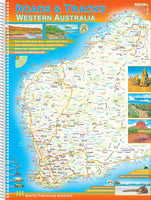5 Best Places to Dive with Sharks

After two years of working on my debut book, it’s finally been released and I’m thrilled with how it turned out. A bucket list of 50 ‘ultimate’ dives around the world, it’s been over 20 years in the making, since I first became a Dive Master at age 16 in my home region of the Great Barrier Reef.
After Ultimate Dive Sites was released last week, I was interviewed by ABC Radio and I found myself stumped when a listener called in to ask, “How many divers have died from shark attacks?” I’d never looked into the statistics, and thus, I was caught off guard. However, I explained that, as a diver, I’m usually hoping to see sharks (the producer jumped in with “There’s been 62 scuba divers fatalities from sharks”). Meanwhile, humans kill around 100 million sharks globally each year.
It’s my hope that anyone who reads or sees the shark photos in Ultimate Dive Sites will develop a greater appreciation for these incredible creatures. A healthy ocean ecosystem need sharks. So, without further adieu, here are my top 5 places to dive with sharks, as chosen from the pages of my book.

The following words are extracts from Ultimate Dive Sites by Todd Thimios, published by Hardie Grant, released 29 January 2025.
Grand Bahama, The Bahamas
Page 56
Look into the eye of a tiger (shark) on a shallow sandbank in the northern Bahamas
With over 40 species of sharks inside the protection of a 630,000km2 (240,000mi2) marine sanctuary, the Bahamas is one of the world’s premier spots for shark diving. Back in 2010, when a seafood company declared its plans to export shark meat to Asia, environmentalists campaigned and thus the Atlantic Ocean’s first shark sanctuary was established. In the northern Bahamas, the islands of Grand Bahama and Bimini draw thousands of divers every year for one thing shark diving. On a shallow sandbank known as Tiger Beach off Grand Bahama you can dive with tiger sharks, and you may also see some of the Bahamas’ other 40-odd shark species including nurse, lemon, great hammerhead and bull sharks. Just south of Grand Bahama is Bimini which is especially known for its great hammerheads; combine the two spots for the ultimate shark diving trip.

Malpelo Island, Colombia
Page 64
Pelagic magic on the eastern edge of the Hammerhead Triangle
A solitary volcanic formation in the Pacific, the remote Malpelo Island (Isla de Malpelo) is one of the sharkiest dive sites in the world. This is one of the largest no-fishing zones
in the Eastern Tropical Pacific Ocean, governed by Colombia and vigilantly guarded by its military. Sitting on the eastern tip of the so-called Hammerhead Triangle, Malpelo’s renowned for its dense shark populations and unique species, including the ragged-toothed shark. A 36-hour steam from the island is accessible only by specialised dive charters with a permit from the government. With steep walls, caves and dramatic pinnacles, this is an exciting destination for advanced divers who are confident and fit enough to handle its challenging and unpredictable conditions.
Cocos Island, Costa Rica
Page 68
Hidden treasure and shark-infested waters make this oceanic island legendary
A remote tropical island with soaring cliffs, waterfalls and shark-infested waters is the perfect setting for a classic novel ... and for pirates to bury their treasure. For centuries, Cocos Island has been shrouded in mystery and legend, with a reputed $1billionUSD of treasure buried on the island. While it’s lured many treasure hunters to its shores, it’s what lies just offshore that attracts explorers these days, including myself. Known as ‘The Island of Sharks’, within the nutrient-rich waters of this UNESCO World Heritage Site you’ll find the largest aggregation of hammerhead sharks in the world. These beauties will leave you spellbound and stoked that you made the mammoth effort to get here. The seamounts and bays of Cocos attract 14 different shark species and vortexes of jacks and barracudas. If you love sharks and pelagics, then you’ll go loco for the Isla del Coco!

Port Lincoln, SA, Australia
Page 30
Eyeball Jaws in the chilly waters of the Neptune Islands
Great white sharks have a fearsome reputation, and rightly so. Growing up to six metres (20ft) they have 300 sharp teeth, their bodies are counter shaded to make them less visible, they can sense a drop of blood from up to half a kilometre away, and they use the element of surprise to hunt. Their sea lion victims don’t know what’s hit them when they suddenly find themselves in the jaws of these apex predators. They are incredible animals, and they are also a vital part of the ocean’s ecosystem. To get up-close with a white pointer is an exhilarating and unforgettable experience, and in the frigid waters of Australia’s Southern Ocean you can do just that ... from the confines of a shark cage.

Beqa Lagoon, Fiji
Page 199
Get up-close to a bull shark feeding frenzy
Sharks are highly revered in Fijian culture, where they’re commonly found in folklore and totems. The ancient shark god, Dakuwaqa, is a protector spirit, believed to provide protection to seagoers. In the waters surrounding Fiji’s islands, many different species of sharks thrive, including one that lures divers year after year for a very unique encounter; the bull shark. In Beqa Lagoon, you can get very close to huge, feeding bull sharks within the constraints of a well-organised dive operation, while feeding money back into the local community and ensuring the continued management of a marine protected reserve. Tours run year-round, though there are two distinct seasons in Fiji. November to April are the summer months, characterised by warmer water temperatures 29–34°C, calmer seas and better visibility. During the winter months of May to October, water temperatures can drop down to 20°C, but there’s more shark activity.
To read more, grab your copy of the new release Ultimate Dive Sites here.









Comments